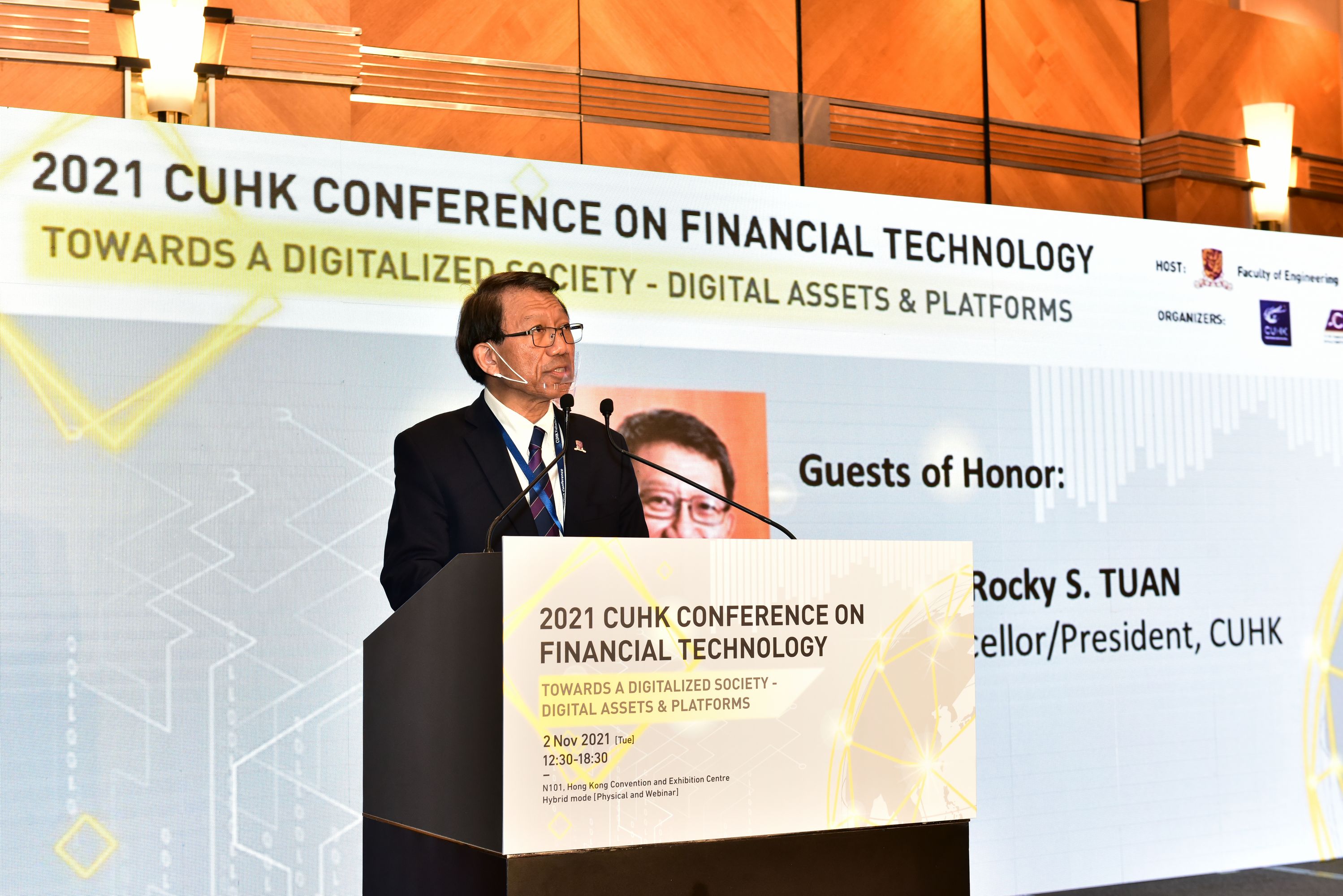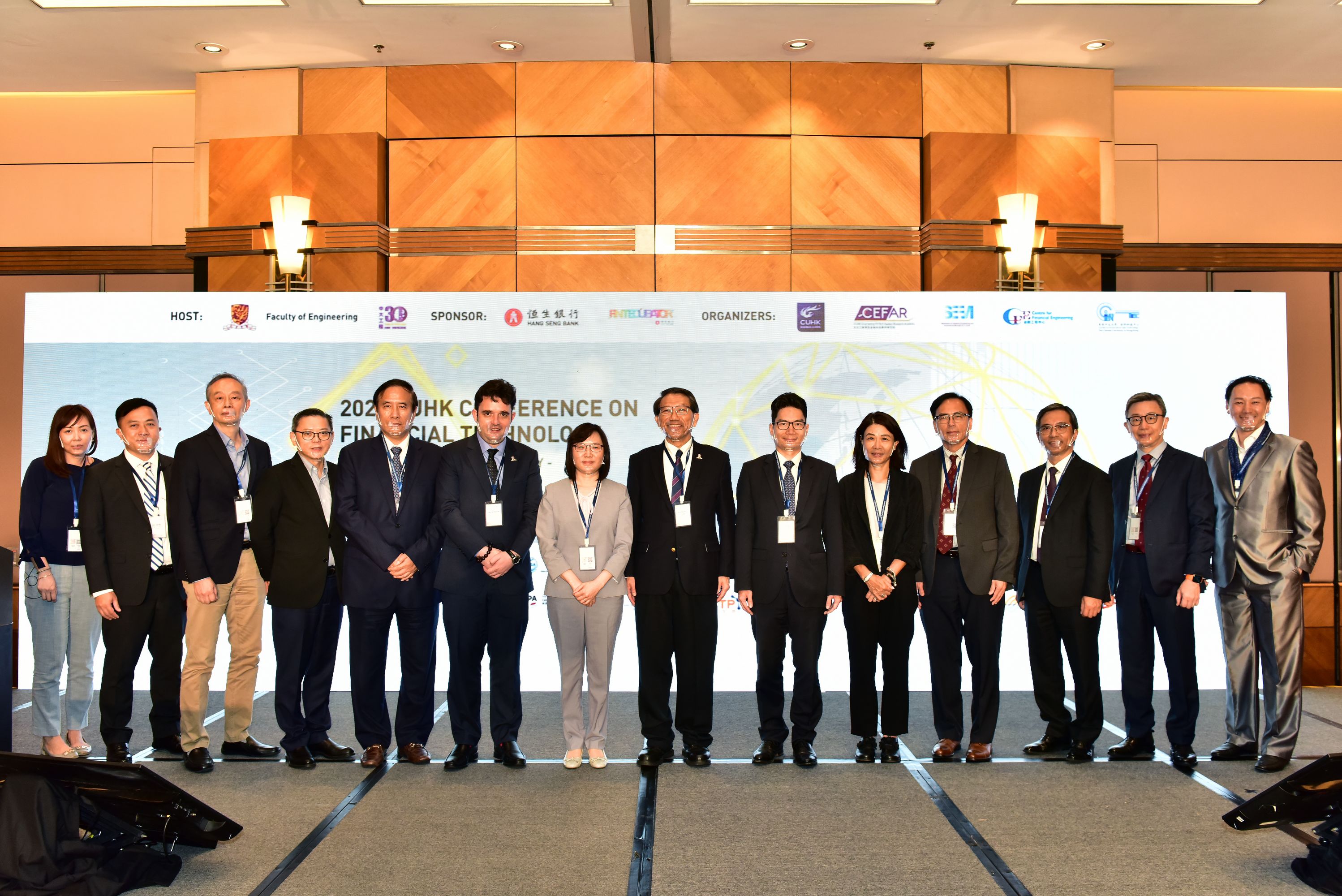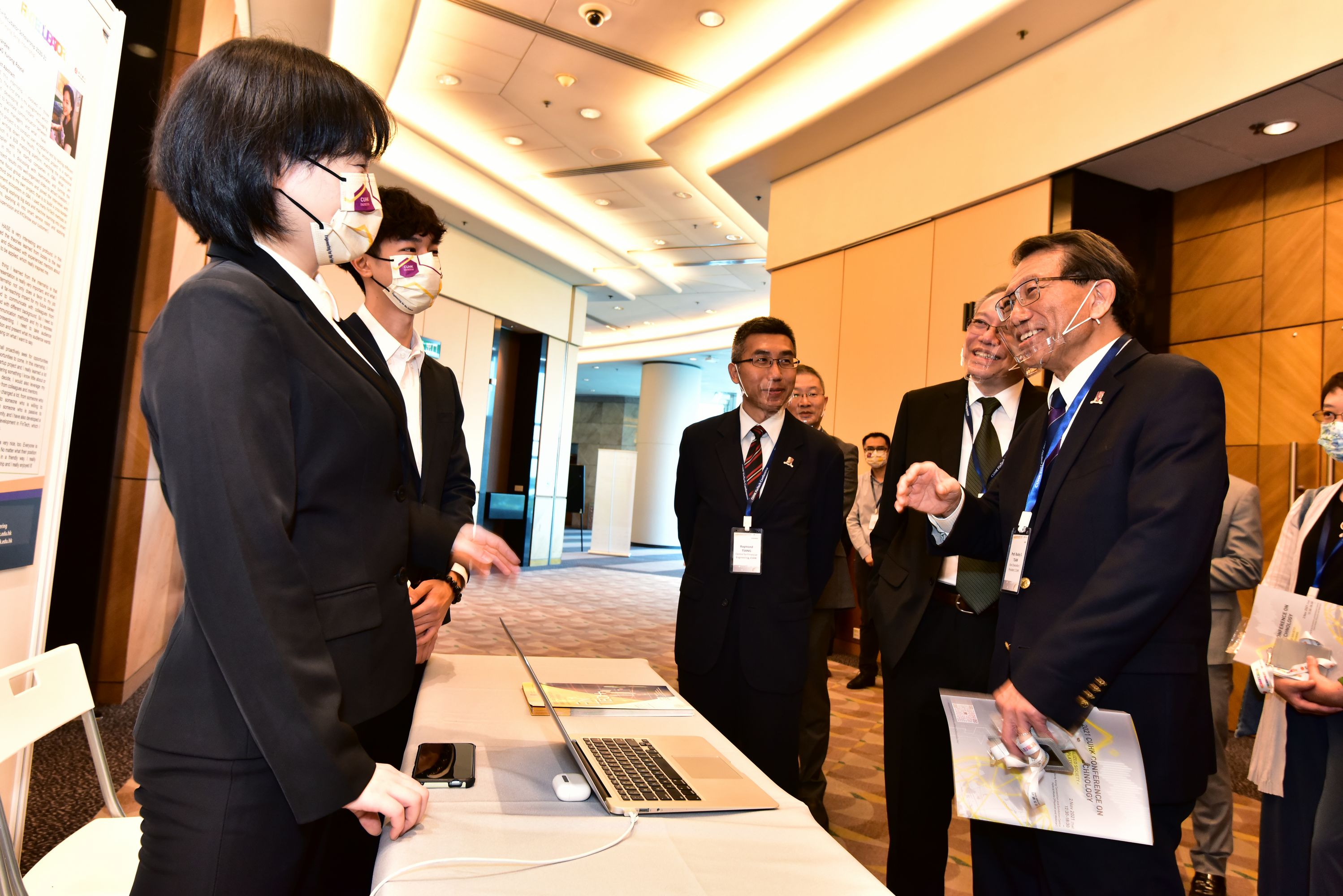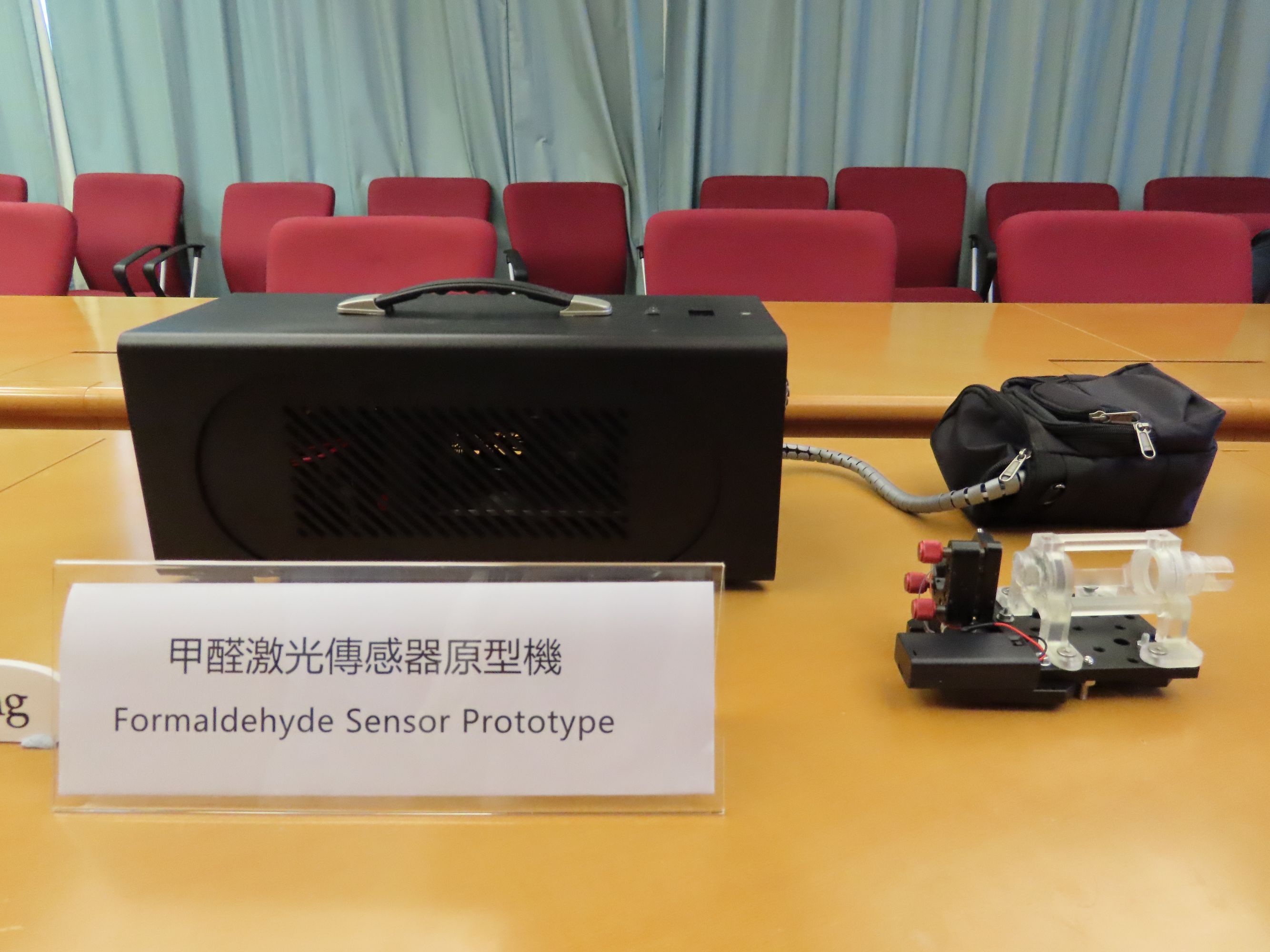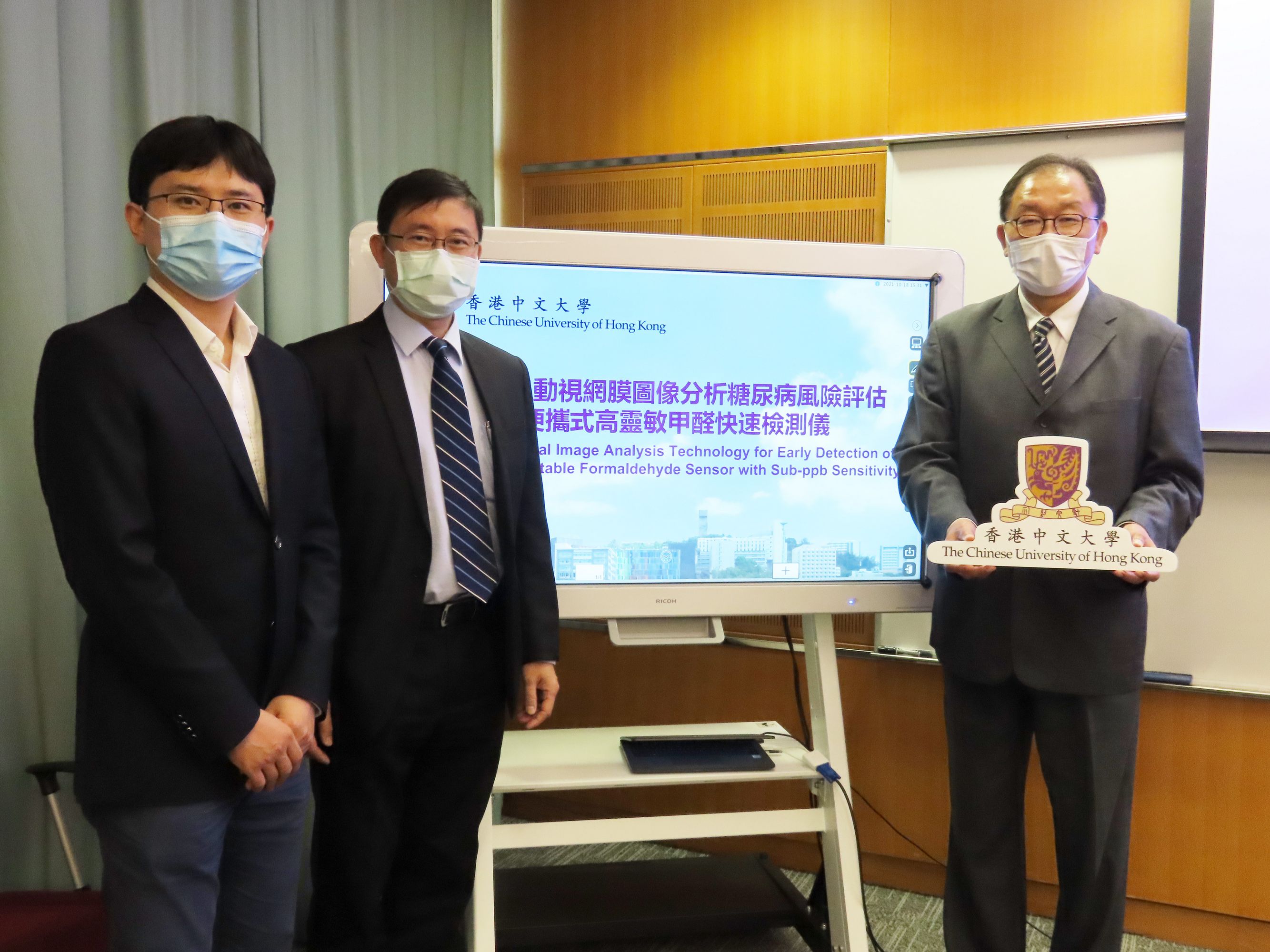The Faculty of Engineering of The Chinese University of Hong Kong (CUHK) hosted the “2021 CUHK Conference on Financial Technology (FinTech)” in hybrid mode today (2 November). This special event was sponsored by the Hang Seng Bank and supported by the CUHK Engineering FinTech Applied Research Academy (CEFAR Academy), the Department of Systems Engineering and Engineering Management, the Centre for Financial Engineering (CFE), the Centre for Innovation and Technology (CINTEC), and CUHK Business School. The conference titled “Towards a Digitalised Society – Digital Assets & Platforms” attracted 800 attendees including industry practitioners, academicians, researchers, government officials and regulators to discuss the developments in digitalisation of assets and platforms which are playing important roles in business transactions.
The conference was officiated at by Professor Rocky S. TUAN, Vice-Chancellor and President, CUHK, Mr. Joseph CHAN, JP, Under Secretary for Financial Services and the Treasury Bureau, Ms Rebecca PUN, JP, Commissioner for Innovation and Technology, Professor Martin D.F. WONG, Dean, Faculty of Engineering, CUHK, Professor Lin ZHOU, Dean, CUHK Business School, and Mrs. Eunice CHAN, Chief Operating Officer, Hang Seng Bank. CUHK scholars and experts from banking, technology, insurance, and entertainment sectors were invited to share their views on the development of stablecoins, digital currencies, cyber security, digital platforms for supply chains, digitisation of cash management, and other related topics.
Professor Rocky S. TUAN, Vice-Chancellor and President of CUHK said, “The University is keen to strengthen its educational exchanges and cooperation with industry and the government, and to explore new opportunities in FinTech development. We are confident that the tripartite partnership between the government, academia and industry will continue to stimulate growth of the FinTech ecosystem and further galvanise the development of FinTech in Hong Kong and beyond.”
Mr. Joseph CHAN, JP, Under Secretary for Financial Services and the Treasury Bureau, said, “Hong Kong ranked first in Asia and third in the world in the Global Financial Centres Index published last month. With the advantages of our international network and preferential access to the market of mainland China, as well as our friendly and supportive policy measures for FinTech development, Hong Kong is the destination choice for FinTech companies to start up and scale up. Many financial institutions and multinational companies set up their Asia regional headquarters or their biggest Asian business presence here in Hong Kong. This is the ideal place for the development of FinTech business as FinTech companies enjoy tremendous access to potential clients, investors and business partners.”
Ms Rebecca PUN, JP, Commissioner for Innovation and Technology, said, “We are pushing forward the development of FinTech in our pursuit of making Hong Kong an international innovation and technology hub. We will continue to invest in infrastructure, research and development, as well as talent. Together with our country’s staunch support for Hong Kong’s I&T development, there are many opportunities for our FinTech community to tap into.”
Professor Martin D.F. WONG, Dean, Faculty of Engineering, CUHK, said, “This conference is one of the core events of the HK FinTech Week 2021. The Faculty of Engineering is pleased to host this conference and to take full advantage of this opportunity to bring together the academia and industry participants to explore and to carry out fruitful discussions on this year’s theme ‘Towards a Digitalised Society’ and to promote future collaboration opportunities.”
Professor Lin ZHOU, Dean, CUHK Business School, said, “CUHK Business School is delighted to be part of this year’s conference which sees a strong collaboration between our University and the industry. Such partnership is essential for the creation of new opportunities in the FinTech sector.”
Mrs. Eunice Chan, Chief Operating Officer, Hang Seng Bank, said, “FinTech is a key element in the digitialisation of society. Hang Seng is actively collaborating with FinTech ecosystem partners and participating in the development of FinTech solutions for society. We are delighted to be partnering with The Chinese University of Hong Kong and to be helping to nurture FinTech talent through designated industrial projects, internships and scholarships. We look forward to these bright minds sharing their creative ideas with Hang Seng and to seeing them further develop these ideas into projects that will benefit our community.”
Other guest speakers participating in the two panel discussion sessions included Mr. Raymond CHENG, Advisory Committee Chairman, CUHK Engineering FinTech Applied Research Academy, Ms. Brit BLAKENEY, Executive Director, Innovation & Ecosystems, DBS Bank (HK) Ltd, Mr. Thor CHAN, CEO, AAX, Mr. Nike KONG, Chief Information Officer, Hang Seng Bank. Mr. Henry CHONG, Chief Executive Officer, FUSANG, Mr. Alun JOHN, Asia Regulation Correspondent, Reuters News, Mr. Joseph CHAN, Chief Digitisation Officer, Hong Kong Monetary Authority, Mr. Patrick KHONG, Head of Data and Architecture, Hang Seng Bank, Ms. Rebecca SHAO, Head of Data and Research and Head of Asia Pacific, The Floor, and Ms Cristina NG, Senior Manager, Payment Services, Open Rice. The speakers shared their views on the current and future developments of digital assets and platforms in the FinTech age. A number of demonstrations were made in the conference, including “Unsupervised Detection of Money Laundering Activities via Diffusion Model” initiated by the academicians and the students of the Department of Systems Engineering and Engineering Management, CUHK and projects in receipt of CEFAR Awards for solutions by FinTech applications in the banking services.
About the CUHK Engineering FinTech Applied Research Academy (CEFAR Academy)
The CUHK Engineering FinTech Applied Research Academy (CEFAR Academy) was established by the Faculty of Engineering, CUHK in 2020. The Academy aims to develop a pipeline for those with FinTech talents who meet the demands of the FinTech industry through engaging them in real-life applied research projects in FinTech applications and providing them a platform that can interact with the industry. Since its establishment, the Academy has actively collaborated and partnered with experts from government/neo-government organisations, commercial organisations and professional bodies, universities, and research institutes to provide research and internship opportunities for talents development of the FinTech industry.
About the Department of Systems Engineering and Engineering Management, CUHK
The Department of Systems Engineering and Engineering Management was established in 1991 with a vision to create and disseminate knowledge and technologies of systems engineering and engineering management for an ever changing society. It offers undergraduate programmes including the Bachelor of Engineering in Financial Technology (B.Eng. in FinTech), and taught and research Masters and PhD programmes with more than 600 current students in the Department. To meet foreseeable strong demand for FinTech professionals in the coming decades, the B.Eng. in FinTech was launched in the academic year 2017/18, the first of its kind in Hong Kong. The programme aims to nurture leadership and entrepreneurship among the next generation of local talent in support of Hong Kong’s endeavour to grow into an international FinTech hub.
About CUHK Business School
CUHK Business School has blazed a trail for business education in Hong Kong and Asia since 1963, cultivating high achieving graduates who steer and shape the global business landscape. This spirit of leadership and innovation goes to the very core of its legacy as the first business school in Asia to offer a full suite of BBA, MBA, and Executive MBA programmes. Today, its world class faculty and cutting edge research continue to develop successful leaders, entrepreneurs, and social stewards with a proud network of more than 40,000 alumni making a meaningful impact in the Pearl River Delta and beyond.
About the Centre for Financial Engineering, CUHK
The Centre for Financial Engineering (CFE) comprises a strong group of experts in the quantitative aspects of finance including computer science, finance, mathematics and statistics. Established in 2013, CFE has achieved some remarkable progress in assembling research teams and organising seminars, conferences, distinguished lectures and short courses. It is currently offering a Master of Science programme in Financial Engineering. Its vision is to develop a multidisciplinary centre in financial engineering and financial technology renowned for the quality of its people and research, and train the next generation of leading academics and industrial leaders in the area.
About the Centre for Innovation and Technology, CUHK
The Centre for Innovation and Technology (CINTEC) is the technology transfer arm of the Faculty of Engineering, CUHK. Serving as a key bridge between the Faculty and the industry, CINTEC promotes communications, facilitates collaboration, and fosters technology transfer and commercialisation through a wide variety of meetings, conferences, exhibitions and discussion forums. The Centre also showcases the University’s latest research and technical achievements at the online platform CINTEC Online Exhibition, enabling the industry to explore potential projects for commercialisation. It also offers various types of incubation support, including coaching, infrastructure, and business connections to students and faculty entrepreneurs so that they can ultimately turn their innovations into business startups.



